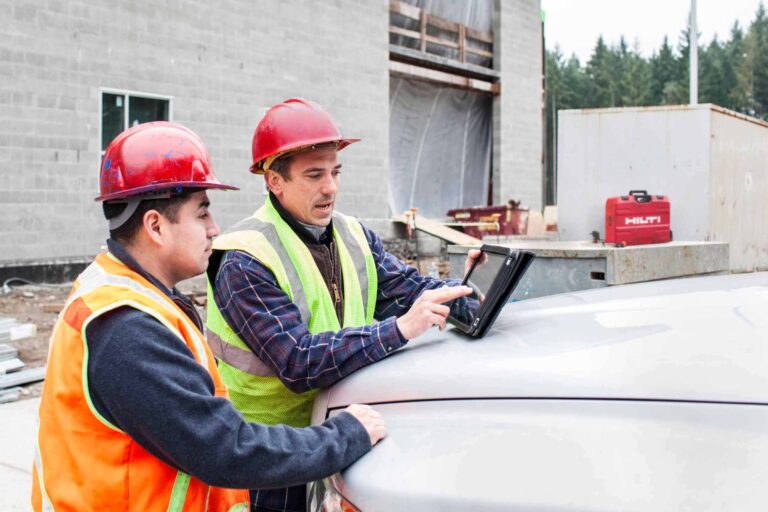
In the ever-evolving construction industry, the integration of data-driven practices is transforming job sites into hubs of innovation, efficiency, and productivity. Traditionally known for its reliance on manual processes and experience-based decision-making, construction is now experiencing a paradigm shift toward a more intelligent and data-centric approach. This transformation is largely fueled by the advent and adoption of digital technologies that enable the collection, analysis, and application of data to inform smarter decisions on construction sites.
The Dawn of Data in Construction
Construction projects have progressively become more complex, with increasing demands for sustainability, safety, and cost-efficiency. This complexity necessitates a more robust method of managing resources, timelines, and risk—a challenge perfectly suited for data-driven solutions. The industry is beginning to recognize that harnessing jobsite data is not merely an option but a necessity for staying competitive and achieving project objectives.
What Is Data-Driven Construction?
Data-driven construction involves the systematic collection and analysis of data generated on sites—from employee performance and equipment health to supply chain logistics and safety incidents. By leveraging sensors, GPS devices, drones, and BIM (Building Information Modeling) technology, among other tools, construction managers can gather vast amounts of data. This wealth of information is then analyzed to uncover patterns, insights, and actionable intelligence that drive decision-making processes.
Collecting Jobsite Data
The first step in turning jobsite data into actionable knowledge is effective data collection. Key sources of data include:
- Equipment and Machinery: IoT devices and telematics systems monitor equipment usage, fuel consumption, and maintenance needs. This helps in predicting when a machine might fail or require service, thereby reducing downtime and maintaining productivity. For example, sensors can track vibrations and heat levels, alerting managers to potential problems before they result in costly repairs or halts.
- Employee Productivity and Safety: Wearables, such as smart helmets or vests, can track workers’ locations and movements, helping managers ensure safety compliance and optimize labor allocation. These devices can also monitor health indicators like heart rate and body temperature, sending alerts if workers are at risk of heat exhaustion or other health concerns.
- Environment Monitors: Sensors track environmental conditions on site, such as temperature, noise levels, and humidity, which can impact both construction quality and worker safety. For instance, monitoring air quality can ensure hazardous materials don’t compromise health or compliance standards.
- Building Information Modeling (BIM): BIM is a digital representation of the physical and functional characteristics of a facility. By integrating this with real-time data, teams can visualize project progress and make necessary adjustments to plans before issues become critical.
- Drones and Aerial Imaging: Drones equipped with cameras and sensors offer a bird’s-eye view of construction sites, providing data for site surveys, inspections, and progress tracking. This technology can deliver high-resolution images of hard-to-access areas, ensuring accurate and comprehensive site analysis.
Analyzing and Interpreting Data
Once the data is collected, the next challenge lies in its analysis. Raw data holds little value without proper interpretation. Advances in data analytics, machine learning, and artificial intelligence play a crucial role in this stage, enabling construction teams to process vast amounts of data efficiently.
- Predictive analytics is revolutionizing the construction industry by providing powerful tools that anticipate challenges before they arise, thus enabling proactive management strategies that minimize disruptions and optimize workflows. This branch of analytics utilizes data-driven models to forecast potential issues, allowing project managers and teams to take preemptive measures that safeguard against operational setbacks.
In the realm of equipment management, predictive analytics shines by analyzing real-time data feeds from machinery equipped with IoT sensors. These sensors collect information such as usage patterns, vibration levels, temperature fluctuations, and pressure changes. By interpreting these data points through advanced algorithms, predictive models can accurately determine when a piece of equipment is likely to encounter failure or require maintenance. This foresight allows construction teams to schedule maintenance during non-peak hours, thereby minimizing downtime and maximizing productivity. Moreover, such predictive maintenance can extend the life cycle of equipment, saving costs related to frequent repairs or premature replacements.
Supply chain management in construction benefits significantly from predictive analytics. By assessing historical data related to material consumption, delivery timelines, and supplier reliability, predictive models can alert project managers to upcoming material shortages before they impact the project. Understanding consumption patterns allows teams to strategically manage inventory levels, ensuring that necessary materials are ordered well in advance of potential shortages. This approach not only mitigates the risk of project delays but also optimizes procurement costs by avoiding last-minute emergency orders that tend to escalate expenses.
Predictive analytics also facilitates forward-thinking in planning and scheduling by identifying bottlenecks in workflow processes. By simulating various scenarios using historical data and current project conditions, teams can pinpoint areas likely to experience congestion or inefficiencies. Armed with this knowledge, managers can adjust timelines, reallocate resources, or modify work sequences to preemptively address these challenges, ensuring smooth transitions between project phases.
Furthermore, predictive analytics plays a pivotal role in risk management, particularly concerning safety protocols on construction sites. By analyzing data related to past incidents, environmental conditions, and workforce behavior, predictive models can highlight potential safety risks. This enables the development of targeted strategies for accident prevention, like updating safety training programs or deploying additional protective measures during high-risk activities.
Incorporating predictive analytics empowers construction firms to move from a reactive mindset to a proactive one, where decisions are driven by insights rather than instincts. As the accuracy and accessibility of predictive models continue to advance, they promise an era of heightened efficiency and innovation in construction management, transforming potential challenges into opportunities for strategic growth and success.
- Descriptive Analytics: This helps companies understand what happened in past projects by analyzing historical data. By understanding patterns such as recurrent delays or budget overruns, companies can improve cost estimations and project timelines.
- Prescriptive Analytics: Going a step further, prescriptive analytics not only predicts outcomes but also suggests actions to achieve desired results. This can include optimized resource allocation and scheduling that take into account variables such as weather forecasts and labor availability.
- Real-Time Analytics: Construction sites can implement real-time analytics to make on-the-spot decisions. This involves immediate feedback from data sources, allowing teams to adjust strategies quickly to respond to unexpected changes.

Making Smarter Decisions on the Jobsite
The ultimate goal of a data-driven approach in construction is to inform smarter decision-making. Here’s how data is reshaping decisions on the jobsite:
- Enhanced Project Planning and Scheduling: By analyzing historical data and integrating real-time updates, construction planners can create more accurate schedules that adapt to changes rapidly, minimizing disruptions and maximizing efficiency.
- Resource Management: Data helps optimize the allocation of resources including materials, labor, and equipment. Real-time tracking of materials delivery can prevent delays caused by supply chain disruptions, ensuring that projects stay on track.
- Safety Improvements: Data-driven insights into safety incidents allow companies to identify trends and risks, enabling the implementation of targeted safety protocols and training to minimize accidents. For example, data can highlight times of day or site conditions associated with higher accident rates, facilitating focused preventive measures.
- Cost Control and Estimation: Better data management leads to more precise cost estimation and budget management. By understanding nuances of labor costs, material use, etc., companies can better control expenses and avoid unexpected overruns that could jeopardize project viability.
- Sustainability Metrics: As environmental regulations tighten and clients increasingly demand sustainable practices, data analytics can play a pivotal role in achieving green goals. Monitoring energy use and waste production helps companies adhere to sustainability standards.
Challenges and Considerations
While the benefits of data-driven construction are substantial, the transition comes with its own set of challenges:
- Data Integration: Integrating data from disparate sources into a cohesive framework that provides useful insights is a significant hurdle. Companies must invest in infrastructure that supports seamless data integration and collaboration across mixed platforms.
- Data Quality and Accuracy: The old adage “garbage in, garbage out” holds true. The usefulness of data-driven insights is entirely dependent on the quality of the data collected. Systems must be in place to ensure data integrity and accuracy.
- Skillset Requirements: The industry needs skilled professionals who not only understand construction but also data science and analytics, posing a challenge in terms of workforce development. Training programs and hiring strategies must evolve to meet these needs.
- Cybersecurity Concerns: With increased data collection comes increased risk of data breaches. Securing sensitive information is paramount, requiring robust cybersecurity measures to protect data integrity and comply with regulatory standards.
- Cultural Shifts: Transitioning from traditional decision-making approaches to data-driven methods can be met with resistance. Ensuring buy-in and understanding of data benefits across all stakeholders—field workers, managers, and executives—is crucial.
The Future of Data-Driven Construction
As technology advances, the potential for data-driven construction continues to grow. Integration with AI and machine learning will further enhance predictive analytics, while IoT and 5G networks promise faster and more reliable data transmission. Future developments in augmented reality (AR) and virtual reality (VR) could offer immersive project simulations for training and development, optimizing workforce readiness and planning.
Moreover, as digital twins—virtual replicas of physical structures—become more prevalent, the ability to simulate, analyze, and optimize every aspect of a construction project will revolutionize the industry. These advancements not only improve efficiencies but also contribute to smarter, safer, and more sustainable construction practices.
The movement toward data-driven construction signifies a transformative era in the industry. By effectively collecting, analyzing, and applying jobsite data, construction firms can make smarter decisions that enhance productivity, ensure safety, and achieve cost efficiencies. While challenges exist, the benefits far outweigh the hurdles, making data-driven methods not just a trend, but a necessary evolution for the future of construction.
As more companies embrace this digital transformation, those that lead the charge will establish a competitive advantage in a fast-evolving market. The foundation for the construction industry’s future is being laid today, and it is built on data. By leveraging data effectively, the construction industry can realize unprecedented efficiencies and usher in an era of innovation and intelligence that redefines how projects are planned, executed, and completed.
In today’s construction landscape, efficiency and accuracy are paramount. Construction management software, like Wunderbuild, revolutionises project handling by centralising tasks, from scheduling and budget management to communication and document control. This integration enhances productivity and ensures projects are completed on time and within budget, making it an essential tool for modern construction professionals. Embrace Wunderbuild here to begin streamlining your construction processes and boost your project’s profitability.



